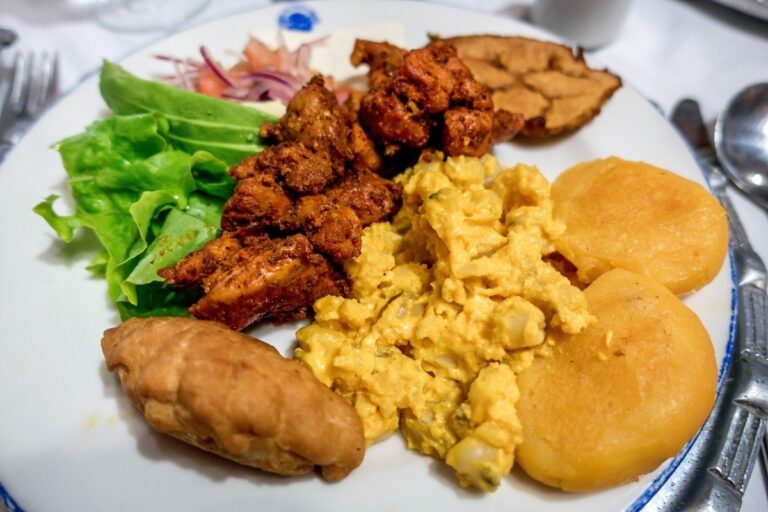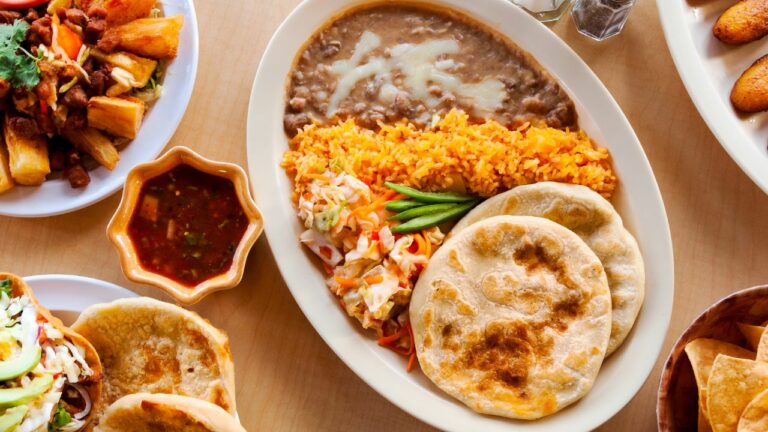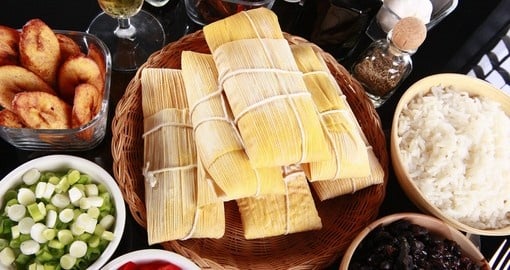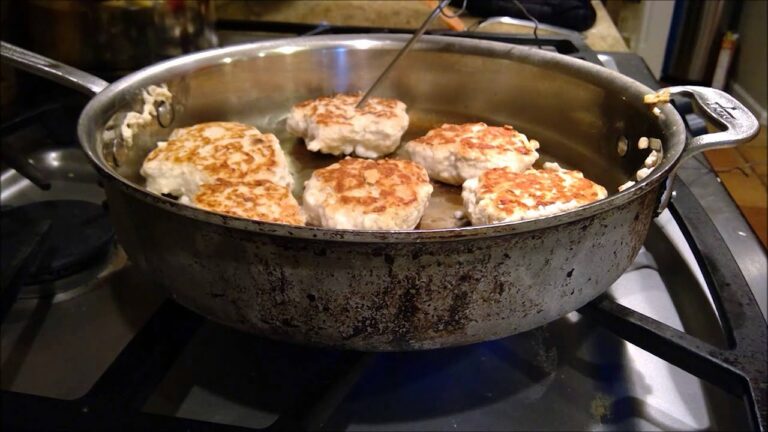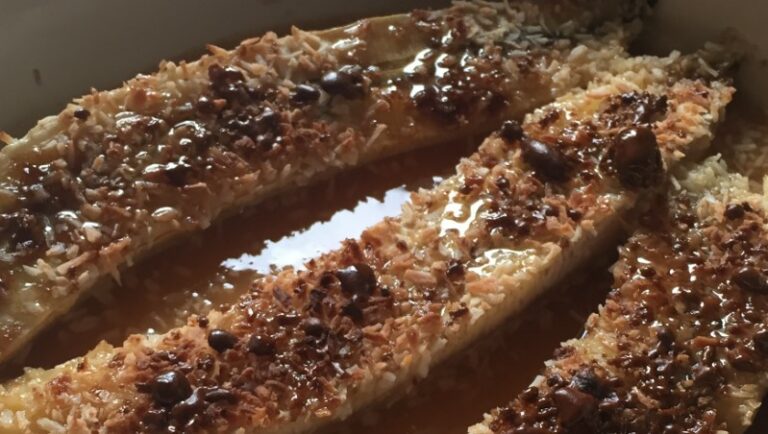Introduction: Ecuadorian Street Food Scene
Ecuador is a country known for its rich cultural heritage and diverse cuisine, which is evident in its vibrant street food scene. Ecuadorian street food is a reflection of the country’s history, geography, and cultural traditions. The street food stalls can be found in every corner of Ecuador’s cities, towns, and villages, offering a wide range of delicious dishes that are affordable, convenient, and flavorful.
Traditional Ecuadorian Street Food Dishes
Ecuadorian street food is a blend of indigenous, African, and Spanish influences that have evolved over time. Some of the popular traditional street food dishes in Ecuador include Empanadas, Llapingachos, Hornado, Tostado, and Churrasco. Empanadas are small pastry pockets filled with meat, cheese, or vegetables. Llapingachos are potato cakes stuffed with cheese and served with peanut sauce. Hornado is a slow-roasted pork dish typically served with corn, potatoes, and avocado. Tostado is a corn snack topped with roasted pork, avocado, and hot sauce. Churrasco is a grilled beef dish served with rice, beans, and fried plantains.
The Evolution of Ecuadorian Street Food
Ecuadorian street food has undergone significant changes in recent years, with new dishes and flavors emerging as a result of globalization and urbanization. Street food vendors are now experimenting with fusion cuisine, combining traditional Ecuadorian ingredients with international flavors. For example, some vendors sell sushi rolls filled with Ecuadorian ingredients like shrimp, avocado, and plantains. The rise of social media has also played a role in the evolution of Ecuadorian street food, as vendors use platforms like Instagram and Facebook to showcase their dishes and attract customers.
Ecuadorian Street Food Festivals and Events
Ecuadorian street food festivals and events are a great way to experience the country’s diverse cuisine and cultural traditions. These events bring together street food vendors, chefs, and food enthusiasts from all over the world to celebrate Ecuadorian food and drink. Some of the popular street food festivals in Ecuador include Quito’s Annual Street Food Festival and Guayaquil’s International Food Fair.
Popular Street Food Festivals in Ecuador
Quito’s Annual Street Food Festival is a three-day event held in November that showcases the best of Ecuadorian street food. The festival features more than 200 street food vendors from around the country, offering a wide range of traditional and fusion dishes. Visitors can sample Empanadas, Tostado, Hornado, and other delicious street food. The festival also features live music, dance performances, and cooking demonstrations.
Guayaquil’s International Food Fair is a week-long event held in July that brings together street food vendors, chefs, and food enthusiasts from around the world. The fair features more than 300 booths selling a wide range of food and drink, including Ecuadorian street food, international cuisine, and craft beer. Visitors can sample dishes from Italy, Spain, Japan, and other countries, as well as attend cooking workshops and live shows.
Conclusion: Exploring Ecuador’s Street Food Culture
Ecuador’s street food scene is a reflection of the country’s rich cultural heritage and diverse cuisine. From traditional dishes like Empanadas and Llapingachos to fusion cuisine like sushi rolls filled with Ecuadorian ingredients, Ecuadorian street food has something for everyone. By attending one of the popular street food festivals in Ecuador, visitors can experience the country’s food culture in a fun and festive atmosphere. Whether you’re a food enthusiast or just looking to try something new, Ecuadorian street food is definitely worth exploring.

